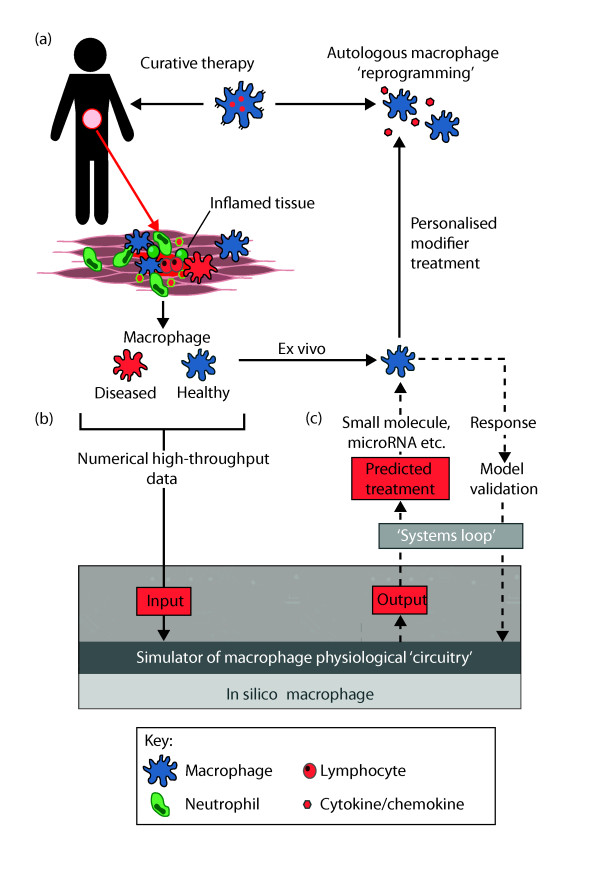Figure 1.
Schematic diagram of how in silico macrophage modeling could be integrated with existing laboratory and therapeutic approaches. (a) Existing protocols can already reprogram patient macrophages ex vivo to treat inflammatory disease. Macrophages are taken from the patient; healthy macrophages are isolated; cytokines and/or chemokines are used to reprogram them; and they are then introduced back into the patient. (b) Laboratory investigations of high-throughput pathway-based analyses of multiple phenotypes are well established. The results of these analyses could be integrated with in silico simulations (c) to predict effective treatments, such as small molecules or microRNAs. Testing these on macrophages isolated from patients (dashed arrow) in an iterative manner or 'systems loop' could be used to validate the in silico model. In this way, new, personalized phenotypic markers and macrophage reprogramming treatments (involving a single modification or a combination of modifications to cells) could be identified, and the therapeutic potential of the ex vivo cells will thereby be markedly enhanced.

